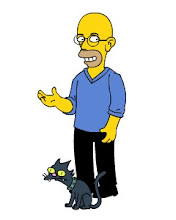
Nazneen leaves Bangladesh and her motherless sister at the age of 18 to marry the much-older Chanu and live in the United Kingdom. Over the years that pass, Nazneen is never able to see her sister, but maintains a link via letters reproduced in the novel. A major strand in the novel is how the lives of the two sisters diverge from one another, driven by their geographical locations and their arranged/love marriages.
While living in London, Nazneen begins a family, giving birth first to a son who dies an infant, then later to two daughters, to whom Bangladesh affords few attractions. Chanu, keen to return a "big man" to Bangladesh plans the family's move back to Bangladesh throughout the novel, to the dismay of his daughters, but with mixed feelings for Nazneen. Keen to re-establish the link with her sister, she also wishes to protect her daughters, all the while gradually assimilating herself into life in the UK.
Part of this assimilation sees her becoming a seamstress to provide money for the family, but this brings with it the temptations of another man. The resolution of this strand is contrasts strongly with related events in her sister's life. The novel also explores in the opposite of assimilation, painting the life of an immigrant to the UK in the 1990s and 2000s; taking in the events of 11th September 2001 and the consequences of its fallout for Muslims.
So far, so descriptive. Judging simply from the time I took to read this novel, I clearly had trouble with it. Most of this stalling stems from me having seen the film of the novel shortly before reading it. [Begin: digression into novel-to-film transitions ...] Like so many films of novels, this fillets the novel in the process of rendering it into a 2-ish hour experience. In my experience, this is a much, much better approach than slavishly squeezing every detail of a novel into its cinematic incarnation. This latter path leads to films where, essentially, a lot of stuff happens, and quickly. The best films allow the story they contain to evolve organically at a pace that suits visual storytelling. This, however, favours shorter novels, where characters can be fleshed out gradually, detail by detail. And shorter novels rarely attract the same adulation that long, detailed novels inspire in readers. Anyway, this is hardly discussing the book, so I'll stop. To summarise quickly though: if you are translating a novel to the screen, fillet the novel to avoid too much happening at once.
Back to the novel. Despite me taking ages over it, it was a good and interesting read. The characters, especially Chanu and Nazneen's sister, are particularly well-drawn. For instance, one's perception of Chanu changes through the novel, but not because he does things that change how he comes across. Instead, the reader (this reader anyway) gradually comes to understand him better, and this casts his earlier actions in the novel in a different light as the novel unfolds. The evolution of Nazneen's sister is similarly involving, although in contrast this involves events in her life. And, of course, Nazneen herself is a compelling creation, gradually evolving from a "girl from the village" into a woman more confident in her juggling of the traditions of her childhood with the modern west.
Getting back to the film for a minute, as already noted it did a great job filleting the novel. While the novel has more (and more fully developed) characters, the film focuses in on Nazneen's immediate family, allowing it to avoid compressing in subplots that, while good in the novel, would only complicate a film (e.g. Nazneen's friend's son's struggle with drugs). The film does miss a couple of tricks though. Less significantly, it skips over the troubles that afflicted the real Brick Lane, and which form the backdrop towards the end of the novel. It replaces this with Nazneen simply pursuing her daughter into a tube station. Not sure why. A more significant lapse with the film is, I feel, its handling of Nazneen's sister. In the novel, while she does make a series of mistakes in her life, it's clear that much of what happens to her is largely beyond her control. In the film, by contrast, her seemingly romantic adventures from her letters are ultimately used to portray her as a prostitute (or something similar). That's not something that I think is intended in the novel, though she does seem to drift from one Sugar Daddy to another. This narrative device does actually work in the film, but just doesn't seem faithful to the character in the novel.
Finally, to return to the title of this post: film then book, or book then film? Obviously the latter, but I did admire the skill by which this novel was turned into a film.








No comments:
Post a Comment